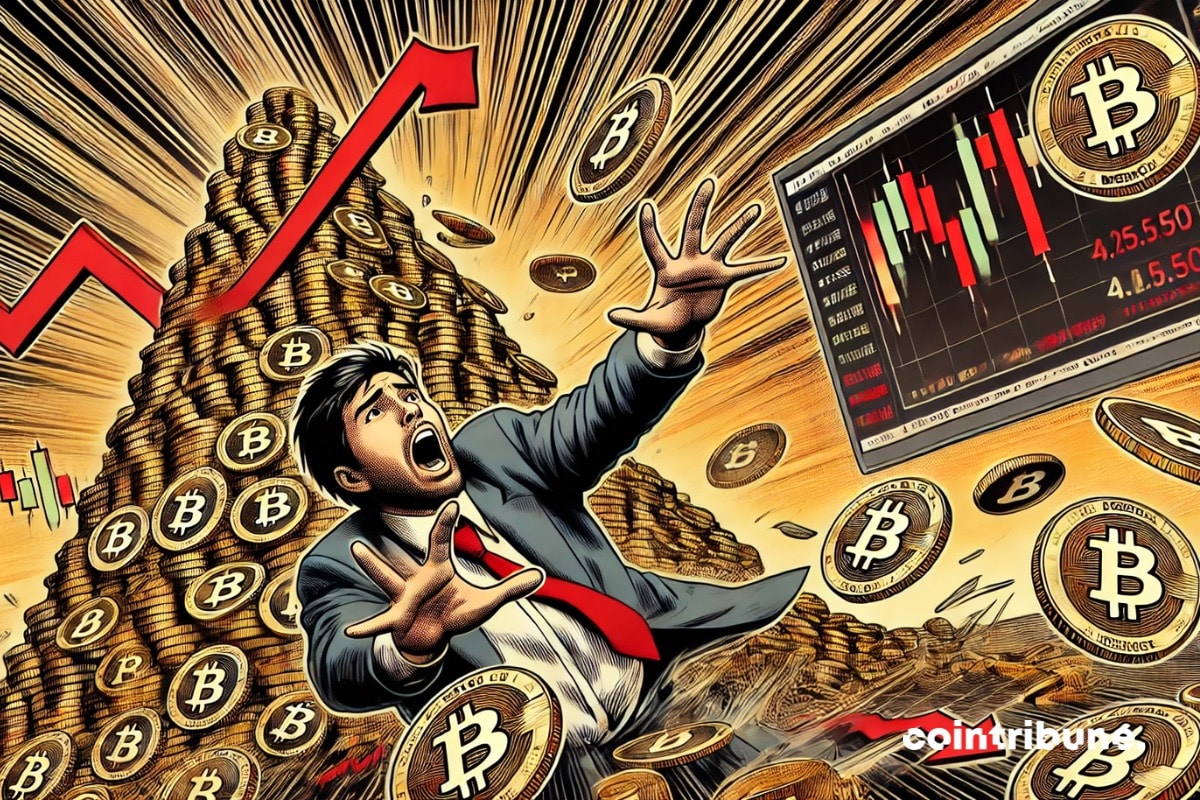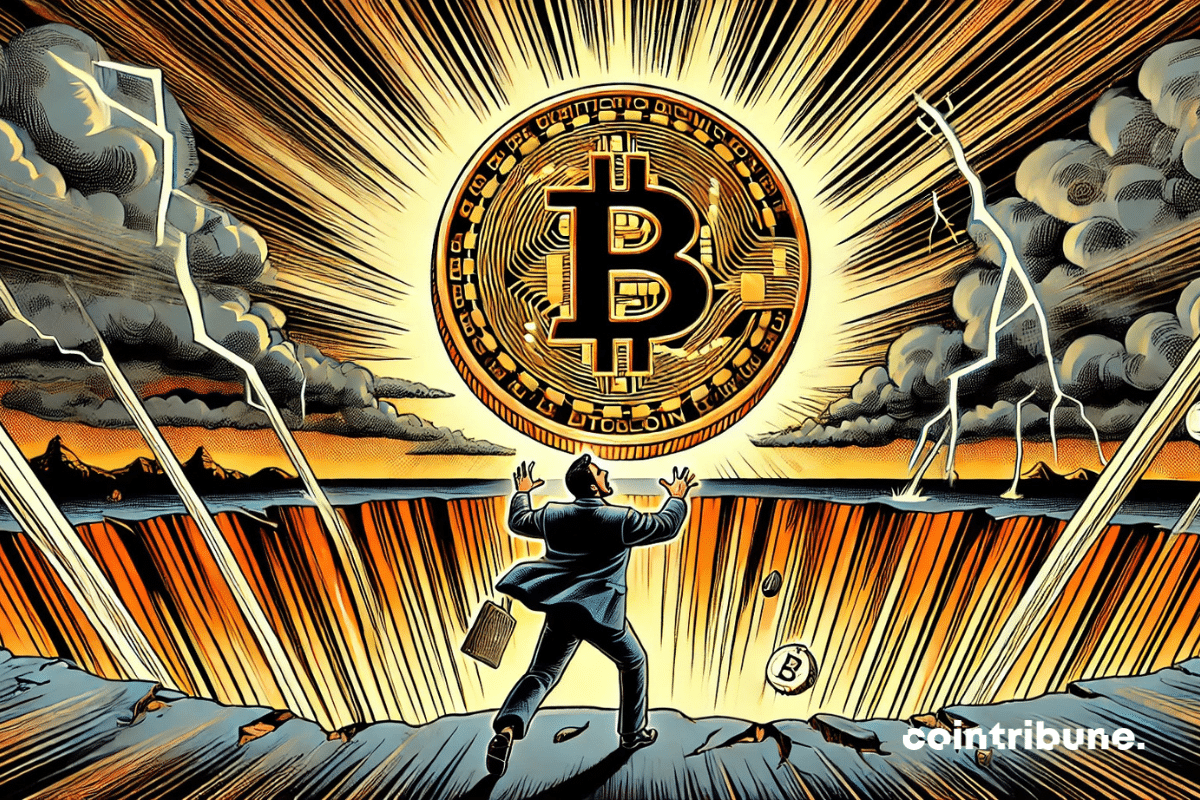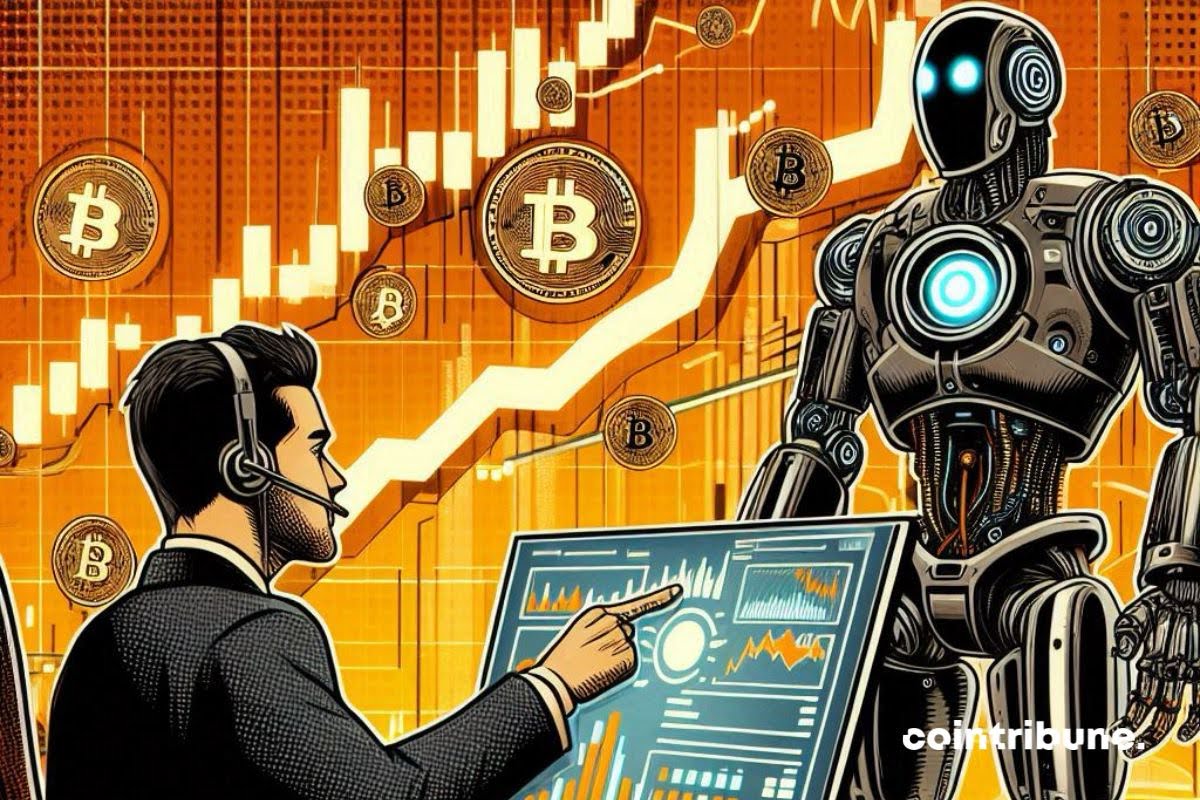Bitcoin is currently undergoing a significant correction, falling below the $86,000 mark. This comes amidst economic turmoil triggered by the announcement of new tariffs by U.S. President Donald Trump. This drop marks a turning point for the cryptocurrency market, which has been facing increasing pressure in recent days. The future of BTC is now more uncertain than ever.
News
Oklahoma, a pioneer of the Bitcoin revolution, has taken a crucial step by validating its strategic reserve project. However, the enthusiasm is far from being shared by all states. A new war begins.
The Avalanche Foundation, in collaboration with Rain, has just announced the launch of the Avalanche Card this Wednesday. This new card will allow users to spend their cryptocurrencies wherever Visa is accepted, with initial support for USDC, USDT, AVAX, and wAVAX.
Hamster Kombat has just unveiled its season 2 with the promise of being "more than just a game," simultaneously launching Hamster Network, its own layer 2 blockchain on The Open Network (TON). This strategic initiative aims to transform the gaming experience into a true decentralized entertainment ecosystem, as the project seeks to win back its users after a challenging period.
Nvidia has revealed impressive financial results for the fourth quarter and the fiscal year 2025, driven by exceptional demand for its artificial intelligence (AI) chips. With a record revenue of $39.3 billion and a 80% increase in its net income, the company confirms its technological leadership.
MetaMask facilitates the conversion of crypto assets to fiat! 10 new blockchains supported. Discover the details in this article.
The crypto scene has just experienced a new episode of turbulence: Bitcoin has dropped to $83,400, its lowest level since November 2024. This sudden correction triggered over a billion dollars in liquidations in the derivatives market. Such a situation has shaken investor confidence. Behind this decline, a convergence of macroeconomic and financial factors weighed on the asset, at a time when the strength of Bitcoin ETFs and the influence of Strategy on the market are being called into question.
The new real estate market has entered an unprecedented slowdown spiral. While access to homeownership remains a priority for many households, the production of new housing is at its lowest level in over 50 years. In 2024, only 59,000 new homes were put up for sale, a decrease of 50% compared to 2022. Thus, this crisis, much deeper than a simple cyclical slowdown, is the result of a combination of structural and economic factors. Rising construction costs, increasingly difficult financing, and the withdrawal of institutional investors are all elements that hinder a rapid recovery.
The T-REX 2X Long MSTR Daily Target ETF, linked to Strategy (formerly MicroStrategy), has fallen 81% since its peak in November 2024, losing 40% in three days, according to recent data. This plunge, amplified by bitcoin's volatility, highlights the risks of leveraged ETFs.
Bitcoin is experiencing a significant new correction, dropping to $85,760 after reaching an all-time high of $101,000 in January 2025. This 16% decline echoes a surprising prediction by Changpeng Zhao (CZ), founder of Binance, who had anticipated this scenario since December 2020.
The foreign policy of the United States could undergo a major shift. As diplomatic tensions between Washington and Moscow have intensified in recent years, Donald Trump appears ready to rewrite the rules of the game. The American president, a favorite in the race for the White House, is considering an economic rapprochement with Vladimir Putin's Russia, aiming to break with the sanctions strategy imposed under Joe Biden. Is this a maneuver intended to undermine the BRICS alliance?
As Bitcoin struggles to maintain its credibility in the face of distressed investors, the crypto market as a whole plunges into a worrisome spiral. The total capitalization reaches an unprecedented level since November 2021, revealing a multifaceted crisis.
In light of the recent drop in the crypto market, Richard Teng, CEO of Binance, shows measured optimism. In an analysis published on February 25, he describes this decline as a mere "tactical retreat" rather than a fundamental shift in trend, reminding of the historical resilience of the sector.
After recording a performance of over 44%, BNB has experienced a decline that calls into question its bullish momentum. Discover Elyfe's analysis to decipher the technical outlook for BNB.
The memecoin market has exploded in recent months, especially thanks to Pump.fun, a platform that has facilitated the creation and launch of tokens. After an initial enthusiasm and massive adoption, new challenges have emerged, including market saturation and the use of manipulation tactics by some developers. PumpRush.fun addresses these issues by launching its version 1 (V1), a powerful tool that offers complete transparency on transactions and tokens.
For decades, Fort Knox has embodied the economic power of the United States. Yet, a insidious question lingers: what if these legendary reserves are just a mirage? The betting platform Polymarket is adding fuel to the fire: a contract speculates at 21% on the actual absence of gold. Between official silence and abundant theories, doubt takes root.
The Bitcoin exchange-traded fund (ETF) market continues to experience a significant wave of capital outflows. According to recent data, the 11 Bitcoin ETFs recorded a net outflow of $937.9 million on February 25, 2025, marking their sixth consecutive day of losses. This is a concerning situation according to experts.
Altcoin ETFs are arriving, but the initial frenzy seems to dissipate quickly. Savvy investors prefer direct acquisition on platforms, far from these newly reinvented promises.
Bitcoin wobbles below a critical threshold, and the pressure is intensifying. While the cryptocurrency had exceeded the $90,000 mark a few weeks ago, it now finds itself below $85,000, prompting analysts to consider a more pessimistic scenario. Between massive ETF sell-offs, cascading liquidations, and macroeconomic uncertainties, volatility is resurfacing, reigniting fears of a collapse to $81,000. Is the market on the verge of a harsh reversal, or is this just a temporary correction?
The next bull cycle will be unlike any other. Indeed, the era when all cryptocurrencies surged seems to be over. Ki Young Ju, CEO of CryptoQuant, sounds the alarm: in the year 2025, the majority of altcoins could disappear. Only those capable of proving their economic viability and capturing the attention of institutional investors might survive. This prediction comes as 24% of the 200 largest cryptos have reached their lowest levels of the year. Is the market sorting through solid projects and the others? The prospects for crypto ETFs, the fundamentals of altcoins, and investment trends now seem to be the true arbiters of survival in this ultra-competitive sector.
Despite the recent price drop, the financial analysis firm Bernstein remains optimistic and maintains its ambitious forecast of $200,000 for bitcoin. Its analysts view this correction as a strategic buying opportunity ahead of the next cycle peak.
In the world of trading, precision and speed are major assets. Thanks to artificial intelligence, it is now possible to optimize performance and automate trading strategies. RunBot, an innovative platform, offers a turnkey solution for traders looking to harness the power of AI.
A European Central Bank (ECB) advisor, Jürgen Schaaf, recently reaffirmed the institution's critical stance on bitcoin, stating that there is "no real economic necessity" for this cryptocurrency. According to Schaaf, unlike strategic reserves of commodities such as oil or gas, BTC does not present any real economic utility or relevant usage.
The world of crypto is based on constantly evolving market dynamics, where the perception of risk and return shapes investors' decisions. While Bitcoin struggles to maintain its support levels, a key technical indicator on Ethereum rekindles traders' enthusiasm. According to analyst Doctor Profit, ETH shows an exceptional risk-reward ratio, reinforcing expectations of a massive rise in the coming months. Between technical analysis and investor accumulation, the asset may well find itself at a strategic turning point.
Bitcoin, the wavering king, falls below $90,000, wept over by runaway ETFs, drowned in a billion liquidated, against a backdrop of farcical Sino-American disputes.
Elon Musk's journey has always been marked by meteoric rises and brutal shocks. However, rarely has a week been as financially challenging for the head of Tesla and SpaceX. In just a few days, his fortune evaporated by $41 billion, a drop that raises questions about the strength of his companies as well as his controversial management. While Musk retains his status as the world's richest man, this unprecedented loss is symptomatic of the growing difficulties faced by Tesla, whose transition strategy towards artificial intelligence worries investors. Additionally, there are political tensions and criticisms of his omnipresence in various fields, which makes the situation even more complex. Amid colossal financial losses and a crisis of confidence, Musk finds himself under the spotlight for reasons very different from those that brought him success.
With the rise of cryptocurrencies, one question often arises: can one live solely on bitcoin? This is the challenge that Martin, a crypto-enthusiast adventurer, took on as he traversed Switzerland, paying exclusively in BTC. His journey, documented in a captivating video, tests the adoption of Bitcoin in a country known for its openness to cryptocurrencies.
After a consolidation around $96,500, Bitcoin faced selling pressure, bringing its price down towards the support level of $89,000. Check out Elyfe's analysis to decipher the technical perspectives of BTC.
The central Bank of China has just carried out an important medium-term lending operation to support its banking system. This injection of 300 billion yuan (approximately 41.83 billion dollars) is part of a broader strategy aimed at maintaining favorable liquidity conditions in an uncertain economic context.
The Ethereum blockchain, often seen as a driving force of innovation in the crypto world, recently encountered a serious setback during the deployment of the Pectra upgrade. While this update was supposed to mark a major advancement for the network, a bug on the Holesky testnet has cast doubt. This incident raises questions not only about the technical challenges Ethereum faces, but also about the crucial importance of testnets in the crypto ecosystem.





























